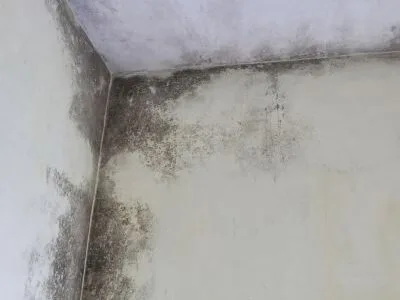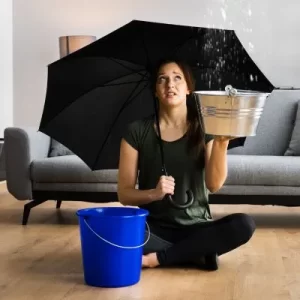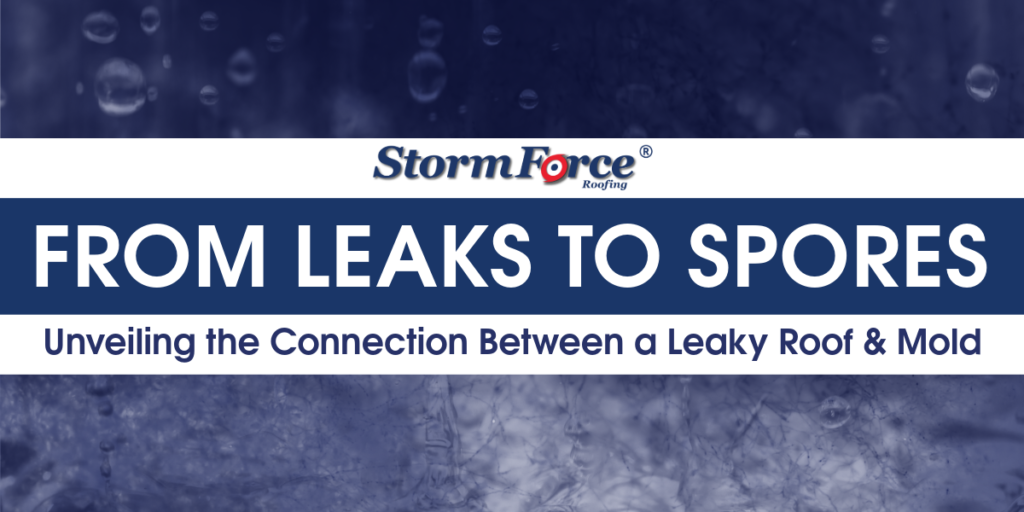Nothing is as unsightly as moldy cheese or bread in the refrigerator. Everyone knows that mold is not good. It’s especially problematic when it appears in your home or business. Who wants to look at or breathe in that unsightly and unwelcome fungus? Gross. Whether on the ceilings or walls or in hidden areas you can’t see, mold presents various problems for residents, occupants, tenants, and guests. But where does mold originate? Do common underlying reasons exist for mold growth in a home or building? Can a leaky roof cause mold? Mold becomes challenging to remove once it enters your home or business establishment, especially if it has existed for many weeks or months. Mold spores will grow and spread until they become virtually unmanageable. At worst, you could lose your home or business.

Understanding Mold
While most people would consider mold disgusting or useless, in nature, it serves an extremely valuable purpose as part of the circle of life. In the Great Outdoors, mold helps break down decaying organic matter, such as fallen leaves, dead plant matter, or toppled trees. Mold expedites the process of decomposition, converting nutrients extracted from disintegrating organic matter into forms that plants can use directly.
But what about mold that enters an indoor environment? Does it serve an important function? Of course not. Indoor mold produces allergens, irritants, and mycotoxins. People suffer dreadful health problems when breathing in these dangerous particles. In fact, inhaling or touching mold can cause a host of symptoms or illnesses. No person should accept or coexist with mold in their home or business. It isn’t safe!
Can A Leaky Roof Cause Mold?
A leaky roof allows fluids to penetrate the outer visible roofing surface, such as shingles or tiles, and through multiple sublayers, including underlayment, decking, etc., into the building. This moisture intrusion becomes problematic when it infiltrates areas of the house where the moisture can collect. The damp areas create an ideal environment for mold to grow.
Heat, humidity, and the lack of air circulation further intensify the probability of mold growth. One spore leads to another until clusters multiply. Depending on your structure’s ventilation and air conditioning system, mold spores can spread into the air and onto other surfaces, exacerbating the spread of mold.

4 Ways To Avoid Mold Damage In Your Home Or Business
Without an effective mold remediation plan, your home or commercial property is a ticking time bomb. It is only a matter of time before mold overtakes sections of your building or the entire home or facility. However, all is not lost. Instead of providing an environment for mold to form, a homeowner or business owner should remain proactive in managing a roof’s condition and make repairs immediately once damage has been detected.
Finding A Contractor To Address Roofing Issues Before They Cause Mold
If you own a home or business in Northeast Florida or along Florida’s Southwest Coast, trust the established residential and commercial roofing leader, StormForce Roofing. Since our founding, we have partnered with thousands of homeowners and businesses to provide unsurpassed roofing solutions, including roof repair, replacement, and restoration following a storm or other catastrophic event.
At StormForce Roofing, we care passionately about our neighbors, friends, and customers in Florida. We are the local roofing company you can depend on to be there no matter what situation arises. By prioritizing your needs and preferences, we strive to deliver the industry’s highest quality customer service, craftsmanship, warranties, and roofing products. To learn more about our exceptional residential or commercial roofing services or to schedule a no-obligation appointment and receive a free estimate, contact us today.
